The Filed Bunch
One of my cherished cinematic endeavors, besides firing up the 81' DeLorean and cruising back through time to the Roaring Twenties, was watching every film from the American Film Institute's 100 Years...100 Movies list (both the 1998 and 2007 editions). Well, I am pleased to announce—and yes, Dubya, this next statement is irrefutable: Mission Accomplished!
That euphoric acknowledgement meant that I had to allocate time for 123 separate viewings. I breath film, so it was rather undemanding.
Mission number two concerned my evaluation of the AFI's two lists. I ranked the films according to my own criteria, a more personalized touch if you will. By the logic of numbers, twenty-three films missed the cut.
The AFI 100 celebrated the first century of American cinema; the 10th Anniversary Edition (2007) extended into the early aughts (well, negligibly, as it removed twenty-three films from the original Top 100 and added only four films from 1996-2006). Additionally, nineteen films made before 1996 were included. Thus, 123 unique films comprise the two editions.
A jury of 1,500 film artists, critics, and historians determined the selection of films. Naturally, as with any list of this magnitude, disagreement's bound to surface. These films, while not universally lauded, are a great starting point for moviegoers, particularly those like myself, immersed in the glorious history of cinema.
Film is inherently personal. There are films emblazoned on this list that will arouse your medieval sensibilities (thank you, Marcellus Wallace for immortalizing this phrase). But for any nascent moviegoer, with only a predisposition to the generic fodder churned out by Hollywood annually, the list provides great value. Will it enhance your appreciation of American cinema, refine your tastes? Perhaps.
Objectivity is an inexact form of currency in film criticism. Everybody has a different criterion by which they judge a film, and as is the point, what one deems as an objective truth is often misappropriated. Ebert once theorized, "To take a hypothetical possibility, if you were to see all 100 films on the AFI list, by the end of that experience, you would no longer desire to see a Dead Teenage Movie." Twenty-minutes viewing ATM adds credence to Ebert's theory. That movie is despicable. But even Ebert, cemented in the pantheon of critics, admits that a "great Dead Teenager movie" may materialize. The point is that films in general circulation betray, more often than not, a depressing weariness. Teenage films, because of their pandering to that all-too crucial, young demographic, tend to burrow in this depressive, unimaginative hole even more aggressively. So if you aspire to soar to artistic heights beyond those offered by the banalities of the drab Hollywood machine, then feel free to observe my ultimately meaningless list, a careful reconstruction of the AFI 100.
*I caution this is not a blanket criticism as Hollywood, despite its flaws, produces plenty of good films to justify its system.
That euphoric acknowledgement meant that I had to allocate time for 123 separate viewings. I breath film, so it was rather undemanding.
Mission number two concerned my evaluation of the AFI's two lists. I ranked the films according to my own criteria, a more personalized touch if you will. By the logic of numbers, twenty-three films missed the cut.
The AFI 100 celebrated the first century of American cinema; the 10th Anniversary Edition (2007) extended into the early aughts (well, negligibly, as it removed twenty-three films from the original Top 100 and added only four films from 1996-2006). Additionally, nineteen films made before 1996 were included. Thus, 123 unique films comprise the two editions.
A jury of 1,500 film artists, critics, and historians determined the selection of films. Naturally, as with any list of this magnitude, disagreement's bound to surface. These films, while not universally lauded, are a great starting point for moviegoers, particularly those like myself, immersed in the glorious history of cinema.
Film is inherently personal. There are films emblazoned on this list that will arouse your medieval sensibilities (thank you, Marcellus Wallace for immortalizing this phrase). But for any nascent moviegoer, with only a predisposition to the generic fodder churned out by Hollywood annually, the list provides great value. Will it enhance your appreciation of American cinema, refine your tastes? Perhaps.
Objectivity is an inexact form of currency in film criticism. Everybody has a different criterion by which they judge a film, and as is the point, what one deems as an objective truth is often misappropriated. Ebert once theorized, "To take a hypothetical possibility, if you were to see all 100 films on the AFI list, by the end of that experience, you would no longer desire to see a Dead Teenage Movie." Twenty-minutes viewing ATM adds credence to Ebert's theory. That movie is despicable. But even Ebert, cemented in the pantheon of critics, admits that a "great Dead Teenager movie" may materialize. The point is that films in general circulation betray, more often than not, a depressing weariness. Teenage films, because of their pandering to that all-too crucial, young demographic, tend to burrow in this depressive, unimaginative hole even more aggressively. So if you aspire to soar to artistic heights beyond those offered by the banalities of the drab Hollywood machine, then feel free to observe my ultimately meaningless list, a careful reconstruction of the AFI 100.
*I caution this is not a blanket criticism as Hollywood, despite its flaws, produces plenty of good films to justify its system.

100). Guess Who's Coming to Dinner
Objectivity is often a crutch of criticism. The scholar can only impart wisdom if truth, fairness, and impartiality dictate the course. But film, apart from academia, stirs emotions, triggers prejudices, feasts on matters of personal taste. While scholarship requires dispassion, rightfully so, matters of the heart rely upon sentiment. Guess Who's Coming to Dinner is a clear example of this dichotomy. It is a triumph of imperfection. The narrative is inconsistent, almost too pedestrian; the characterizations bare, indistinguishable, facile. But the experience—film is, above all, visceral—is utterly delightful, and, in a mortal sense, tragic, for this would mark the final screen appearance of the iconic Spencer Tracy (he passed away prior to the film's release). Opposite his real-life, longtime companion, the legendary Katharine Hepburn, Tracy delivers a spirited, intense performance. Unlike their caricatures of deceit, the unruly pair proves that subjectivity, not objectivity, rules the day. And Sidney Poiter's bravura certainly helps. The parting lesson: One's enjoyment of a film need not depend upon paradigmatic doctrines. Tides of dissension recede when faith and curiosity swell.
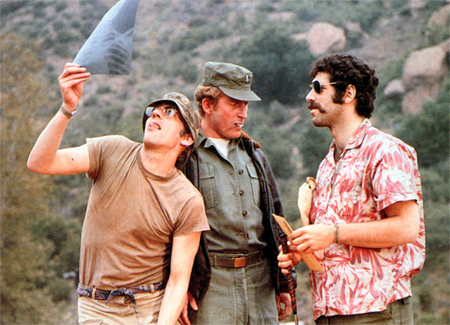
99). MASH
Robert Altman is a masterful filmmaker, emboldened by the idiosyncratic. In a sense, he's an iconoclast. MASH, his satirical adventure which dives headfirst into the malaise of war, is a shrewd albeit polarizing dissection of the desperate impulses of men at war. Memorable, bizarre performances from a typically robust Altman-ensemble animate the comedic proceedings. Donald Sutherland, Elliot Gould, and Tom Skerritt are captains of insensitivity and their crass, vulgar tics unleash a rare humorous energy that, well, spawned an iconic TV show.
Robert Altman is a masterful filmmaker, emboldened by the idiosyncratic. In a sense, he's an iconoclast. MASH, his satirical adventure which dives headfirst into the malaise of war, is a shrewd albeit polarizing dissection of the desperate impulses of men at war. Memorable, bizarre performances from a typically robust Altman-ensemble animate the comedic proceedings. Donald Sutherland, Elliot Gould, and Tom Skerritt are captains of insensitivity and their crass, vulgar tics unleash a rare humorous energy that, well, spawned an iconic TV show.

98). Easy Rider
The rebellious climate of chaos otherwise known as the counterculture movement of the late-1960's, born from the traumas of the Vietnam War, necessitated a movie with a spirit that only Wyatt (Peter Fonda), Billy (Dennis Hopper), and George Hanson (Jack Nicholson) could conjure. Easy Rider is a moving catalogue where the visuals, more vigorous than photographs, act as tangible snapshots of a transient time and peculiar place. It is the movie that introduced to the masses Jack Nicholson, a manic contradiction, tender and passionate—the perfect facsimile for the tensions, excesses, and amoral amplitudes of the era.


97). Fantasia
When classical music and pristine imagery dance on the screen, man is reminded instantly of Stanley Kubrick, the incandescent architect of sound and image. Films like 2001: A Space Odyssey and Clockwork Orange (both of which are featured effusively in my AFI 100) embody this artistic marriage, demonstrating deftness in both photography and choreography. Well, Fantasia, made in 1940, precedes Kubrick's peerless catalogue by a number of years. The ballad of movement, music, and visual mannerism, pierced indelibly in the creative conscious does, too. Composed of eight distinct episodes, animated with gravitas from music conducted by Leopold Stokowski and the Philadelphia Orchestra, Fantasia glides into the fertile, imaginative realms, unleashing a vibrancy that to this day still births artistic royalties. Call it the offspring of Walt Disney.


96). Intolerance
Intolerance over The Birth of a Nation, but why? I'll tell you why. D.W. Griffith, a criminal of prejudice, was motivated by morality; his vision guided by a redemptive code. While Birth denigrated notions of equality and civility, Intolerance, long-acknowledged as his formal apology, harnessed virtuous principles whose application proved impenetrable. No man is without fault. Griffith's ambitious appeal to the downtrodden is evidence that the rehabilitated man can flourish artistically, and most important, humanistically.
Intolerance over The Birth of a Nation, but why? I'll tell you why. D.W. Griffith, a criminal of prejudice, was motivated by morality; his vision guided by a redemptive code. While Birth denigrated notions of equality and civility, Intolerance, long-acknowledged as his formal apology, harnessed virtuous principles whose application proved impenetrable. No man is without fault. Griffith's ambitious appeal to the downtrodden is evidence that the rehabilitated man can flourish artistically, and most important, humanistically.

95). The Grapes of Wrath
John Ford, John Steinbeck, Henry Fonda. 'Nuff said.


94). My Fair Lady
I once harbored a strong dislike for the Hollywood Musical. This was before I undertook the AFI 100. Before I discovered the fierce charisma of Gene Kelly, the agile artistry of Fred Astaire, before Ginger Rogers' sultry numbers shook my masculinity. This was before the unbearably accented patter of Eliza Doolittle (played beautifully by the Goddess of Grace, Audrey Hepburn) assaulted my senses, and certainly before the self-assured elocution of Henry Higgins (Rex Harrison, to steal a baseball analogy, hit it outta the park with his surly performance) made me scrutinize my own inflection. And George Cukor, one of the Golden Age's most accomplished pioneers (The Philadelphia Story, Adam's Rib), flawlessly navigated the oratorical dialectic between Doolittle and Higgins, the speech world's equivalent to a Heavyweight bout.
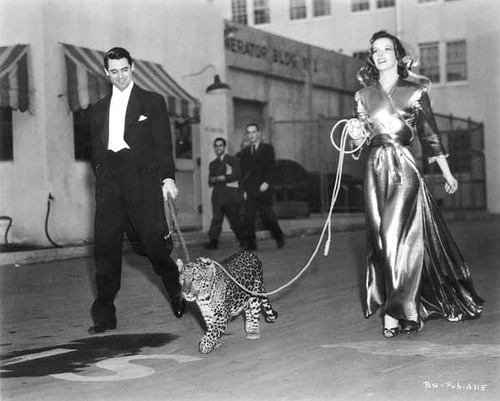

93). Bringing up Baby
BUB is preposterous, but endlessly fun. The story, despite its zany descent into the impossible, is galvanized by an infectious, romantic energy of which Katharine Hepburn's and Cary Grant's unassailable chemistry is the source. Howard Hawks's nimble direction assuages our calls for reason. This, after all, is the man who gave the world of cinema Scarface, His Girl Friday, Red River, The Big Sleep, Rio Bravo, Sergeant York, and countless other cinematic thrills.


92). A Place in the Sun
Montgomery Clift was Marlon Brando without the Italian last name and longevity. Brando himself would assert that Clift was the superior actor. It's a shame personal tragedy befell Montgomery's career because his trajectory was destined for the pantheon. A Place in the Sun was a luminous reminder of his extraordinary talent (though I prefer his work in Red River, miraculously his feature-film debut, and From Here to Eternity). Elizabeth Taylor, his dynamic costar, never looked more beautiful nor acted with more solemnity. Her portrayal of Angela Vickers, tonally and emotively, was pitch-perfect (Who's Afraid of Virginia Woolf certainly demonstrates her iconic flair for the dramatic). George Stevens, responsible for Swing Time, Shane, and Giant, colored Theodore Dreiser's sociological study with a stark black-and-white palette, a reflection of humanity's fragile disposition. The final sequence will raise the hairs on whichever part of your body hair resides.


91). E.T. the Extra-Terrestrial
Decrying it the forefather of product placement is perhaps the only complaint man can levy against Spielberg's mystical tale. If you have not noticed, Hollywood, these days, is obsessed with commercial aggrandizement. And, believe me, the evolution will not stop at 90-minute advertorials disguised as character studies of technology. Think E.T. the YouTube Species: An alien, who resembles a famous Disney character and dresses at Saks Fifth Avenue, undertakes a perilous intergalactic quest to discover chaffless cologne (because we all know aliens and cologne don't mix...right?). That whole mediation on alienation, loneliness, friendship, imagination, which enhanced Spielberg's wondrous story, save it for the birds. Merchandising is the narrative linchpin of today.


90). Nashville

89). West Side Story

88). Midnight Cowboy

87). King Kong (1933)

86). Toy Story

85). It's A Wonderful Life

84). Manhattan

83). Butch Cassidy and the Sundance Kid


82). A Streetcar Named Desire
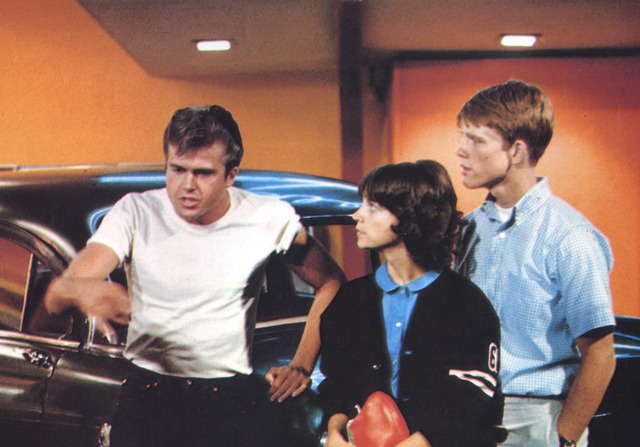
81). American Graffiti
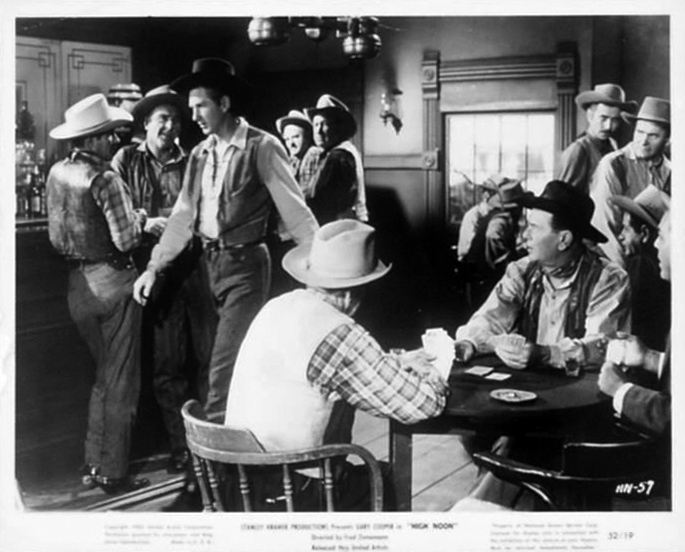
80). High Noon

79). The Shawshank Redemption
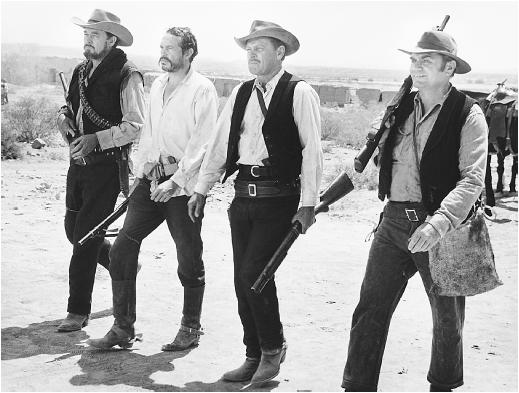
78). The Wild Bunch

77). The Lord of the Rings: The Fellowship of the Ring

76). North by Northwest
*****STAY TUNED FOR PART II: 75-51*****
*****STAY TUNED FOR PART II: 75-51*****


I'll be interested to follow this and see the whole list. I assume King Kong is the original?
ReplyDeleteYep, the 1933 version featuring Fay Wray in all her screaming glory!
DeleteMatty! Good to see you back! Are the films with no Mattywords after the titles works in progress - or are you not giving us your thoughts on them?
ReplyDeleteI only ask because the thoughts you gave us on the earlier ones were SO FREAKIN' AWESOME.
It feels great to be back. Thanks for the cheerful gesture!
ReplyDeleteFine observation, Craig. My plan, as of this moment, is to reveal my AFI 100 with perhaps 40 observations on specific films. Then, once the cat is out of the proverbial bag and my selections are published for digital perpetuity, I'll revisit my posts and provide insights into the 60 or so other films. That way, in due time, I'll have a complete AFI 100 breakdown for your reading pleasure :)
It's great to see you back in the blogosphere. Movie alk hasn't been the same. Sorry I am coming to this post so late. I meant to comment the other day, but had to leave.
ReplyDeleteAnyway, enough of my trite excuses. You're right film is subjective and while I certainly laud all these films, I do have a special place in my heart for those DTM's. Can't help myself. LOL
I have seen all of these, but Nashville. And I will have to remedy that soon. I'm loving this list so far. And now I am off to catch up on the rest of the installments.
Thanks for the delightful welcome, Mel! And no worries on the tardiness...like I'm one to talk, lol.
DeleteI can't disparage your tastes because DTM's can be very fun. Unfortunately, the last one I saw put a bad taste in my mouth, but that doesn't tarnish the genre unconditionally. I suppose, in a loose sense, Chronicle could be considered DTM, and, well, it was fantastic!
Definitely get to Nashville when you have a chance. One of the great ensemble pieces.
Stay tuned =D
play bazaar
ReplyDeleteRub your belly in a slow, clockwise pattern after any meal for best results. This is the direction that food will naturally follow as it enters your digestive system and begins to break down. This belly-rub will stimulate the digestion-process. Try this for yourself and notice the improvement within minutes.satta king